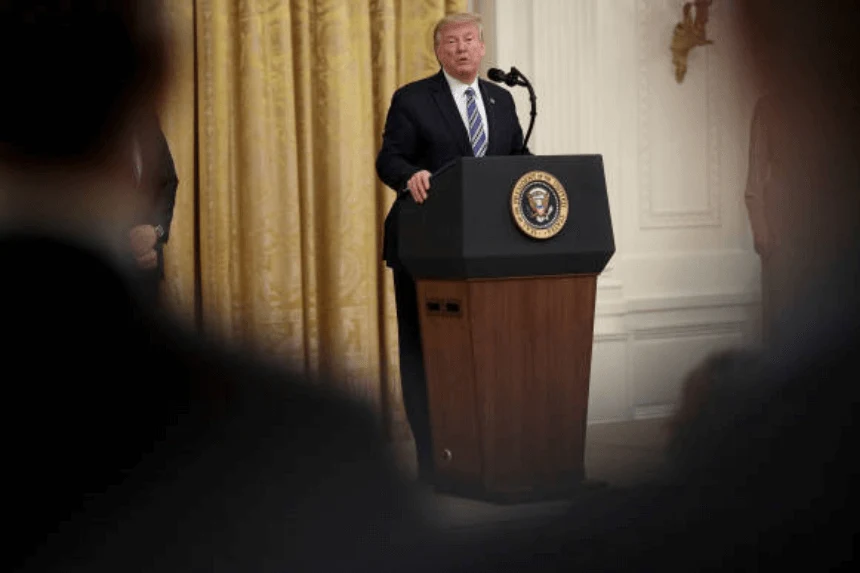President Donald Trump has scored his first significant legislative victory of his second term. With narrow Republican majorities in both chambers, the passage of the Trump tax cuts legislation marks a defining moment in his policy agenda. The bill is a wide-reaching package that not only fulfills key campaign promises but also sparks urgent debate over fiscal responsibility, healthcare access, and national priorities.
Supporters view the bill as a bold step toward revitalizing the American economy. However, critics argue it comes at the cost of rising national debt and deep cuts to social programs. This landmark law signals a shift in U.S. economic policy and is expected to influence political discourse in the lead-up to the midterm elections.
How Did the Trump Tax Cuts Legislation Gain Enough Support?
Early in the year, even getting Republicans to unify around a legislative strategy seemed unlikely. The GOP had just endured a tense battle to reelect Congressman Mike Johnson as Speaker of the House. Divisions between conservative budget hawks and centrist lawmakers made passing any major legislation appear doubtful.
However, the Trump administration mounted a highly coordinated effort. They appealed to various Republican factions by offering targeted concessions and by emphasizing the bill’s long-term economic impact. Fiscal conservatives were assured of military spending boosts and tightened immigration enforcement. Meanwhile, centrists were swayed by scaled-back social program cuts and promises of economic growth.
Ultimately, both chambers passed the Trump tax cuts legislation, showing that, despite internal divisions, the GOP can still push through major policy changes when unified.
Where Will the Money Go?
The legislation outlines significant increases in federal spending in specific areas. It allocates approximately $150 billion to strengthen border security, expand detention centers, and hire additional immigration enforcement officers. Another $150 billion will fund military upgrades, with a major portion dedicated to the president’s “gold dome” missile defense program.
Yet, the most transformative aspect of the bill lies in its sweeping tax reforms. The Trump tax cuts legislation enacts over $4.5 trillion in tax cuts over the next decade. Some of these were set to expire and are now made permanent, while others introduce new relief for middle-class workers, including the elimination of federal taxes on overtime pay and tipped income through 2028.
Trump administration officials argue that these tax changes will drive economic growth, raise wages, and increase business investment. They also point to rising tariff collections as an added revenue source to offset the cost.
Is the Growing National Debt a Concern?
The bill also raises the federal debt ceiling by $5 trillion. According to the White House, this is a precautionary move to allow flexibility during early economic recovery. However, critics see it as a red flag. Independent projections suggest the legislation could add more than $3 trillion to the national debt over the next decade.
Senator Rand Paul criticized the move, stating, “If we believed the tax cuts would truly pay for themselves, we wouldn’t need to increase our borrowing authority.” Tech entrepreneur Elon Musk expressed similar concerns on social media, warning of long-term consequences like higher interest rates and reduced government investment in future infrastructure.
The Trump tax cuts legislation thus opens a wider conversation about balancing economic stimulus with responsible governance. Read another article on Elon Musk Trump Tax Bill Critique
How Will It Affect Healthcare and Social Programs?
One of the most hotly debated elements of the bill is its $1 trillion in cuts to Medicaid, the public health insurance program for low-income Americans. The Congressional Budget Office estimates that nearly 12 million people could lose Medicaid coverage over the next ten years.
Senator Thom Tillis of North Carolina, a Republican, publicly opposed the bill over these cuts. “We are turning our backs on working-class voters who trusted us,” he said. He pointed out that more than 660,000 people in his home state could be affected.
Democrats and advocacy groups have promised strong resistance. They argue that the Trump tax cuts legislation prioritizes wealthy Americans over vulnerable populations. According to them, reducing healthcare access in exchange for long-term tax breaks sends the wrong message about national values.
How Will Voters React to the Legislation?
Although many provisions—particularly Medicaid cuts—won’t take effect until after the upcoming midterms, Democrats are already planning to campaign aggressively against the bill. They intend to use it as a case study of Republican priorities: cutting taxes for the wealthy while slashing social programs.
Meanwhile, President Trump is preparing a patriotic July 4 signing ceremony for the Trump tax cuts legislation, portraying it as a symbol of strong leadership. The administration believes this victory will help energize Trump’s base and prove he can deliver on promises without relying solely on executive action.
Still, the ultimate political impact remains uncertain. With the midterms approaching, how voters perceive this legislation—whether as economic progress or social regression—could determine control of Congress.
Conclusion: What Does the Trump Tax Cuts Legislation Mean for America?
The Trump tax cuts legislation is more than just a set of economic policies—it represents a broader shift in national priorities. For supporters, it’s a victory for fiscal freedom, lower taxes, and economic dynamism. For opponents, it’s a risk-laden tradeoff that could harm millions while rewarding a privileged few.
The law’s full consequences will unfold over years, not months. But one thing is clear: this legislation will shape America’s economic, healthcare, and political landscape for the foreseeable future.
As the debate intensifies, voters, lawmakers, and analysts will continue to assess whether this bold move drives lasting prosperity or deeper inequality.








